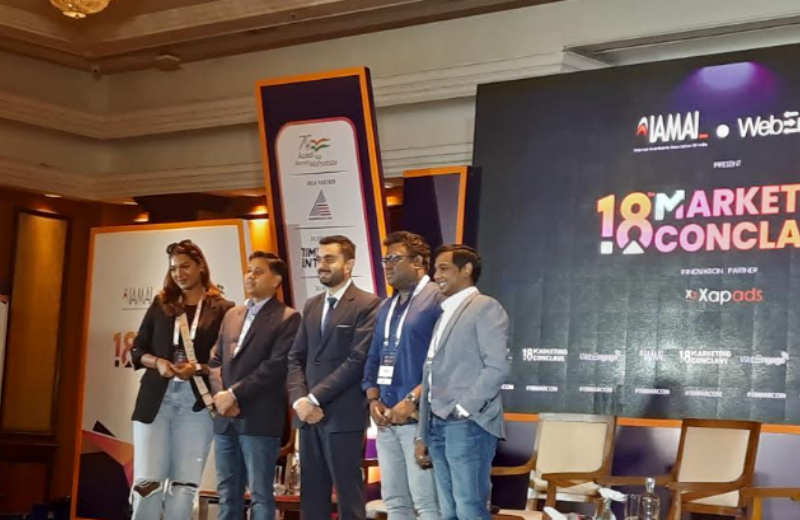At the 18th edition of IAMAI’s marketing conclave, a panel discussed how the influencer market is growing rapidly and how brands can market subtly through their consumers without being preachy.
The moderator of the panel was Chandrasekhar Samiappan, head of creator partnerships, Google India. The panel comprised Arnab Mitra, managing director, Liqvd Asia; Kiran Giradkar, chief marketing and communications officer, Nilons Enterprises; Sarah Sarosh, influencer and Vikram Bhayana, head of marketing, Bajaj Allianz General Insurance.
Emerging trends in the content creation landscape
Sarosh started the session by saying, “The consumer attention span has reduced a lot, giving rise to short-form content. The attention span of the audience is not more than 12 minutes. But I strongly believe that there should be a healthy mix of long and short-form content. If we are just creating short-form content, creators will be relevant for a shorter time. It creates short-lived fame.”
Bhayana believes that the end consumer doesn’t want to see separate campaigns. He shared, “If marketers give consumers separate call-to-actions, they will completely disconnect from the brand. They want a seamless tonality of either influencer or brand communication.”
Brands on influencer marketing spends
Talking about post-covid spends for influencer marketing, Mitra said, “Brands have realised that there is a difference between influencers and creators. The entire marketing budget is also split somewhere in the chief marketing officer's mind between these two subsets of the creator ecosystem. The yesteryears of TVC budgets have taken a hit, and a significant part of these spends is now allocated for just content creation. The influencer reach is a metric that is now on every marketer's radar.”
Content marketing in the finance space
Sharing how content marketing is relevant for his brand, Bhayana expressed, “Insurance is a conversational sale. Only if it is talked about - it sells. To enable this strategy, we have got a facility known as relationship managers (RMs) at hospitals. If any assistance needs to be provided to a consumer in regards to getting the right doctor, room and amenities, they are there to help until the patient is discharged. The beauty here is we are using our RMs as content creators and the end consumer as an influencer. If the consumer is happy with our service, they will provide a testimonial on the spot. We are not running after influencers but using people who are using our products to get the word out.”
Integrating brand conversations
Mitra stated that an influencer should not be selling a product. “The moment an influencer picks the product in its hand, they become an endorser. The consumer will then view that as advertising. An influencer is someone who has the brand integrated into their lifestyle, and the consumer will find that more credible. As a marketer, the credibility of content should be cross-checked, to help brands garner organic reach and promotions."
Keep the brand at the heart of the conversation
Bhayana pointed out that the brand should not allow the influencer to become bigger than itself. “When the influencer becomes bigger than the brand, they won’t do justice to it. Marketers need to wear the brand on their sleeves and not the other way around. Influencers need to accentuate the brand. They should be on the same journey to enhance the brand’s message.”
Creators adapting to brand requirements
Giving her closing remarks, Sarosh surmised, “A brand can’t just get creators who are sharing only some bits of what they are doing. The end goal is sales conversions, hence the consumer should know the influencer's entire life. Relatability and credibility are needed to keep brands coming back to a creator. Furthermore, creators shouldn’t just follow the brief given to them. Creative freedom needs to be given to the influencer, since it gives a personal touch and credibility, which leads to brand sales.”

